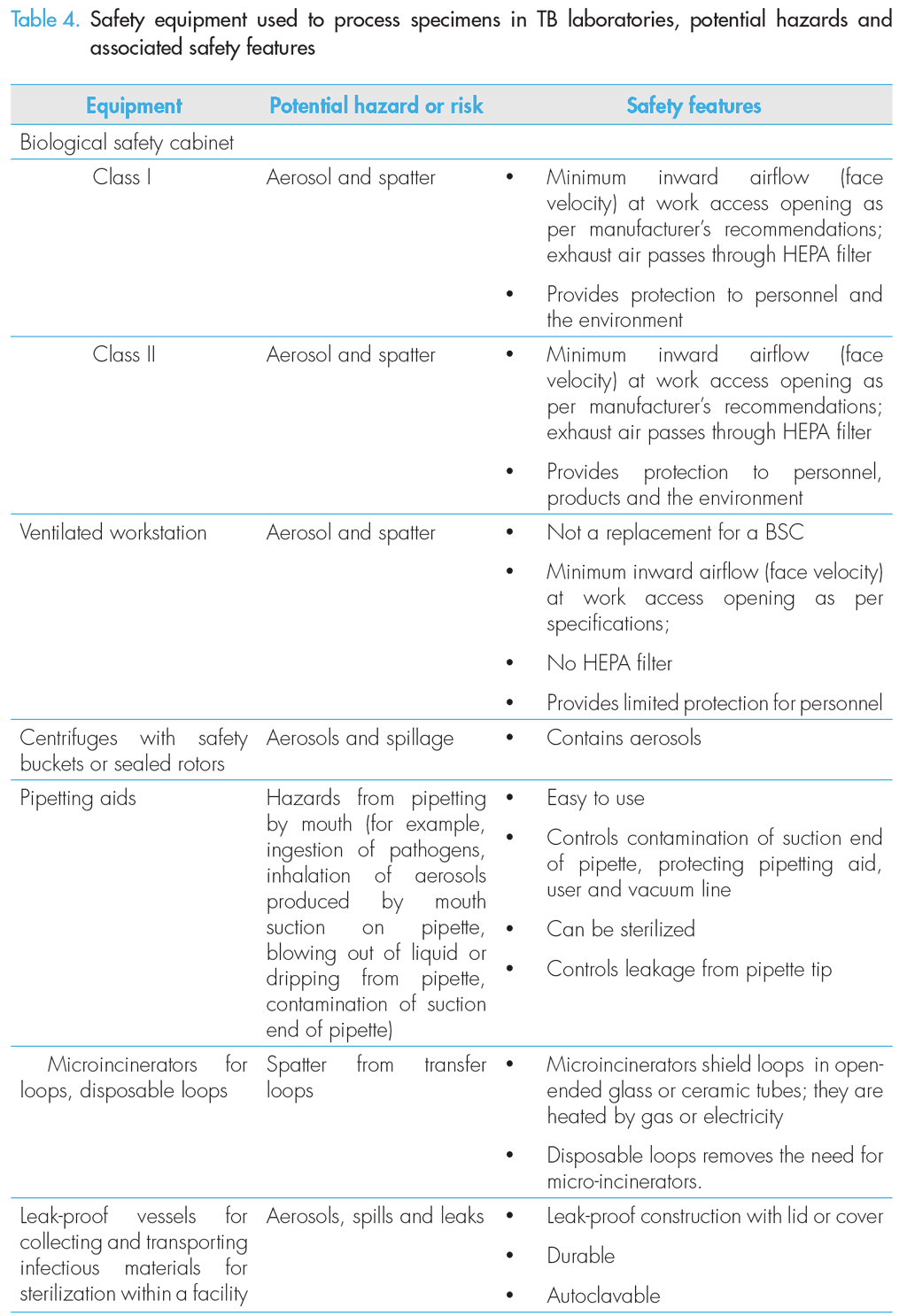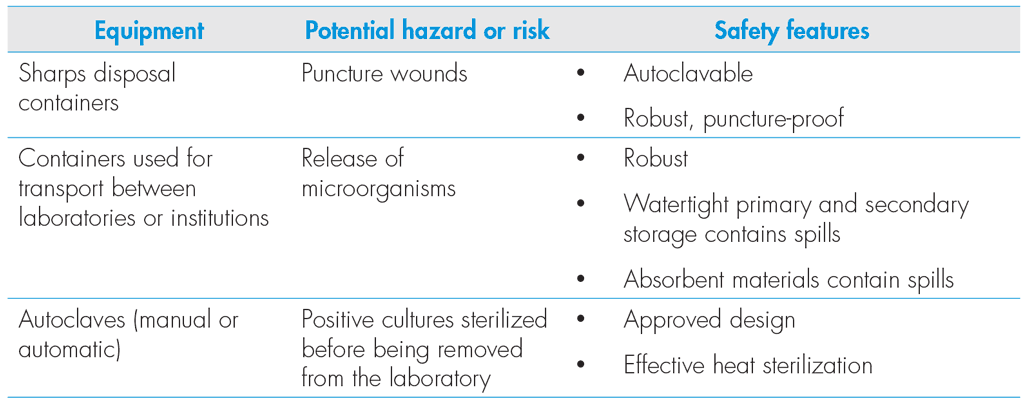Book traversal links for 6.3 Autoclaves
In general TB laboratories that perform diagnostic tests, an autoclave that uses saturated steam under pressure is the most efficient means of sterilizing instruments, glassware and media solutions; it is also used for decontaminating biological material (such as mycobacterial cultures). Two factors are essential for an autoclave to function optimally: (1) all of the air in the chamber should be replaced by steam; and (2) the temperature must be 121 °C.
Autoclaves should be located away from the main laboratory working area because they may be noisy, hot and release steam. An autoclave used to decontaminate infectious material, should have an exhaust air valve equipped with a bacterial filter. The autoclavable sterile filter should consist of a filter cartridge with a membrane (pore size 0.2 µm) incorporated into a pressure-resistant housing; the filter should be easy to replace. The filter is automatically sterilized during each sterilization process. An autoclave MUST be available in each facility where TB cultures are performed and should ideally be placed within the TB-containment laboratory.
The manufacturer’s instructions for operating and cleaning the autoclave must be followed at all times.


HEPA, high-efficiency particulate air; BSC, biological safety cabinet.
 Feedback
Feedback